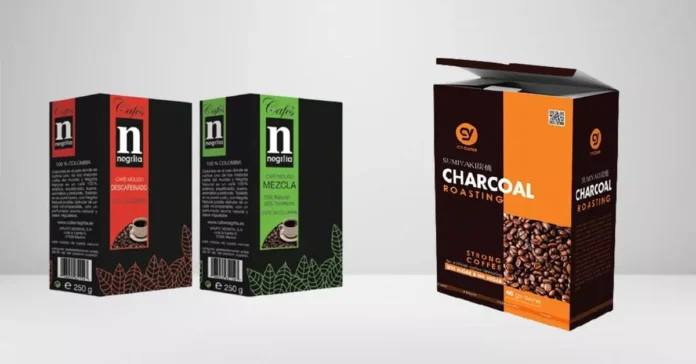Coffee is one of the most popular beverages consumed worldwide, with millions of cups enjoyed every day. However, the packaging used to store and transport coffee beans and ground coffee can have a significant impact on the environment. As consumers become more aware of the negative impact of traditional coffee packaging on the planet, the demand for sustainable coffee packaging is growing. In this article, we will explore the latest trends and innovations in sustainable coffee packaging and how they can contribute to a more sustainable future.
Introduction
- The environmental impact of traditional coffee packaging
- The growing demand for sustainable coffee packaging
The Need for Sustainable Coffee Packaging
- Negative impact of traditional coffee packaging on the environment
- The importance of reducing waste and promoting sustainability
- Consumer demand for eco-friendly packaging
Innovations in Sustainable Coffee Packaging
Biodegradable Materials
- Biodegradable coffee bags made from natural materials
- The benefits of using biodegradable materials for coffee packaging
Compostable Packaging
- Compostable coffee packaging made from renewable materials
- The advantages of compostable packaging over traditional packaging
Recyclable Packaging
- Recyclable coffee packaging made from plastic or paper
- The challenges of recycling coffee packaging
Reusable Packaging
- Reusable coffee containers and refill systems
- The benefits of using reusable packaging for coffee
Smart Packaging
- Innovative packaging solutions that reduce waste and improve freshness
- The advantages of using smart packaging for coffee
Increased Use of Biodegradable Materials
One of the key trends in sustainable coffee packaging is the increased use of biodegradable materials. Traditional coffee bags are often made from multiple layers of plastic and aluminum foil, which are not easily recyclable and can take hundreds of years to decompose. Biodegradable coffee bags, on the other hand, are made from natural materials such as compostable polymers, plant fibers, and paper.
These biodegradable coffee bags offer several benefits. Firstly, they break down naturally over time, reducing their environmental impact. Secondly, they can be composted along with organic waste, providing a valuable source of nutrients for plants. The use of biodegradable materials in coffee packaging not only reduces waste but also helps to promote a circular economy.
Greater Emphasis on Compostable Packaging
Compostable coffee packaging is another area of innovation in the quest for sustainability. Compostable packaging is made from renewable materials like plant starch, cellulose, and other organic compounds. It is designed to break down completely in industrial composting facilities, leaving behind no harmful residues.
Compostable coffee packaging offers several advantages over traditional packaging. It reduces waste by diverting packaging from landfills and incinerators. Additionally, compostable packaging can contribute to the production of nutrient-rich compost, which can be used to enrich soil and support sustainable agriculture. Many coffee companies are embracing compostable packaging as part of their commitment to environmental stewardship.
Expansion of Reusable Packaging Options
To further reduce waste, the coffee industry is exploring reusable packaging options. Reusable coffee containers and refill systems are gaining popularity as consumers become more conscious of single-use packaging waste. With these systems, customers can bring their own containers to coffee shops or purchase durable, reusable containers provided by the coffee companies.
The benefits of reusable packaging are manifold. It significantly reduces packaging waste, as a single container can be used multiple times. It also encourages a shift in consumer behavior towards a more sustainable mindset. Reusable coffee packaging is not only eco-friendly but also offers a convenient and cost-effective solution for coffee lovers.
Integration of Smart Packaging Technology
Smart packaging technology is another innovative trend in sustainable coffee packaging. Smart packaging incorporates sensors, indicators, and tracking systems to monitor the freshness and quality of coffee throughout its journey from production to consumption. This technology helps to reduce waste by ensuring that coffee is consumed at its optimal freshness and quality.
Future Trends in Sustainable Coffee Packaging
Increased Use of Biodegradable Materials
- Growing popularity of biodegradable coffee bags
- The potential for new biodegradable materials to be developed
Greater Emphasis on Compostable Packaging
- More companies switching to compostable coffee packaging
- The potential for compostable packaging to become the norm
Expansion of Reusable Packaging Options
- More coffee shops and retailers offering reusable coffee containers and refill systems
- The potential for reusable packaging to become a mainstream option for consumers
Integration of Smart Packaging Technology
- Greater use of smart packaging solutions to reduce waste and improve freshness
- The potential for smart packaging to revolutionize the coffee industry
Conclusion
Sustainable coffee packaging is essential for promoting a more sustainable future. From biodegradable and compostable materials to reusable and smart packaging solutions, the coffee industry is making significant strides in reducing waste and promoting sustainability. As consumer demand for eco-friendly packaging grows, we can expect to see continued innovation and progress in sustainable coffee packaging.
FAQs
What is sustainable coffee packaging?
Sustainable coffee packaging refers to packaging that has a reduced environmental impact, such as biodegradable, compostable, recyclable, or reusable packaging options.
Why is sustainable coffee packaging important?
Traditional coffee packaging can have a negative impact on the environment, contributing to waste and pollution. Sustainable coffee packaging is essential for reducing this impact and promoting a more sustainable future.
What are some examples of sustainable coffee packaging?
Biodegradable coffee bags, compostable packaging made from renewable materials, recyclable coffee packaging, reusable coffee containers and refill systems, and smart packaging solutions are all examples of sustainable coffee packaging.
What are the benefits of using sustainable coffee packaging?
Sustainable coffee packaging reduces waste and pollution, promotes sustainability, and meets consumer demand for eco-friendly options.
What are the future trends in sustainable coffee packaging?
Future trends in sustainable coffee packaging include increased use of biodegradable materials, greater emphasis on compostable packaging, expansion of reusable packaging options, and integration of smart packaging technology.


